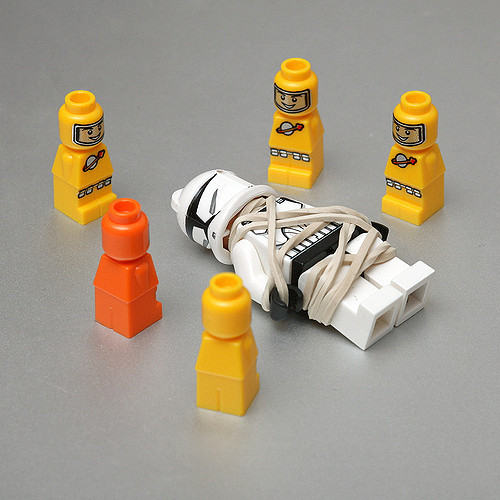Capture Tasks

A couple weeks ago I wrote about the three key elements to a productivity system. Today we’ll review the first of those in detail: Capturing your Tasks.
There are all kinds of places where we get things we need to do. Tasks can come in the mail in the form of flyers, letters from relatives, packages we ordered, or bills. Ultimately tasks come in to us from one of a couple categories:
- Mail (Physical and Electronic)
- Conversation and Meeting commitments
- Thoughts and ideas
If you think of your productivity as a system with inputs and process and then the outputs, all these things that come in are the inputs, the things we need to manage. When you think of the variety of places where these things come in and the regularity with which they come, it can be overwhelming. When I was growing up we had a spot on the kitchen counter where the mail would be placed. Often it would go unprocessed for days and cascade across the counter until somebody took the time to sort through it and pull out the essential items while throwing the rest out.
“Sorting through the mail,” is one of the processes we have to execute in order to take inputs and begin to create tasks from them. Sometimes we don’t write down the tasks explicitly, but will instead just do it. In some cases it will take longer to do the task so we will want to track it. In other cases we can batch them. As an example, lets return to the pile of mail.
Usually when I process the mail I divide it into two piles. One that is just junk I don’t care about, and another that will need to be processed one at a time. The easiest thing to do is to just toss the junk mail into the trash. We don’t need to write ‘Throw junk mail out’ on a task. It will take longer to write it down and check it off than it would to walk over to the trash and toss it. Save time, just toss it out and move on.
The next thing to do is process the essential mail.
As we go through the essential mail we may notice a couple categories. For example, bills can be put into their own pile. Stuff we want to read could be put into another pile and then stuff we know is important, but don’t really need to read we can just archive. There are, essentially three things to do with these then.
- Read
- Archive
- Perform an action
After reading something we may want to perform an action on that piece of mail, archive it, or throw it away. Going back to my pile of mail, let’s say there is a phone bill, a utility bill, a magazine, a comic book, a notice from the life insurance policy and something from one of the doctors. I’ll take the two bills and put them into the bill pile. Then I’ll look at the doctor letter and see that it is just a notice that they charged the insurance and that we don’t owe them anything. I’ll put that into a different pile to be archived. I’ll put the magazine and the comic book into the ‘read’ pile. After looking through the notice from the insurance company, I’ll also put that into the archive pile. I’ll have my three piles then: two bills in the action pile, two notices in the archive pile, and the magazine and the comic in the read pile.
Once these piles are sorted, I then put a task into my task management app titled “Pay bills”, ‘Process reading pile”, “process archive pile”
Each of these piles has a different process and usually it’s best to leave the ‘process archive pile’ for the end because stuff will go from the pay bill and the read processes into the archive pile. I’d rather just execute that process once, so I’ll leave that to the end.
I can now execute the processes for taking care of these three piles.
I use this same process for conversations, meetings, thoughts and ideas. For me the key is to create a physical item that I can then use as the input as I being to work through each pile of stuff in my physical inbox.
I also use the same process for email, but I don’t create a physical item. Instead I just add the tasks directly into the task management system. I also do the preprocessing on email. I’ll do a quick pass and delete or archive all the email I don’t care about. By the time my quick pass is done I usually have less than 10 emails I really care about. That’s much easier to manage than 50.
As I describe it, the process seems a bit lengthly, but I’ve found this is a fairly easy and efficient way for me to get through all the paper and electronic stuff that comes into my life.
What is your process like? Do you use something similar or is your completely different? I’l always on the lookout for ways to improve my system so it matches how I like to work. Share what you do below.
The image is “Day 194” by Pascal. You can find it on flickr

Comments